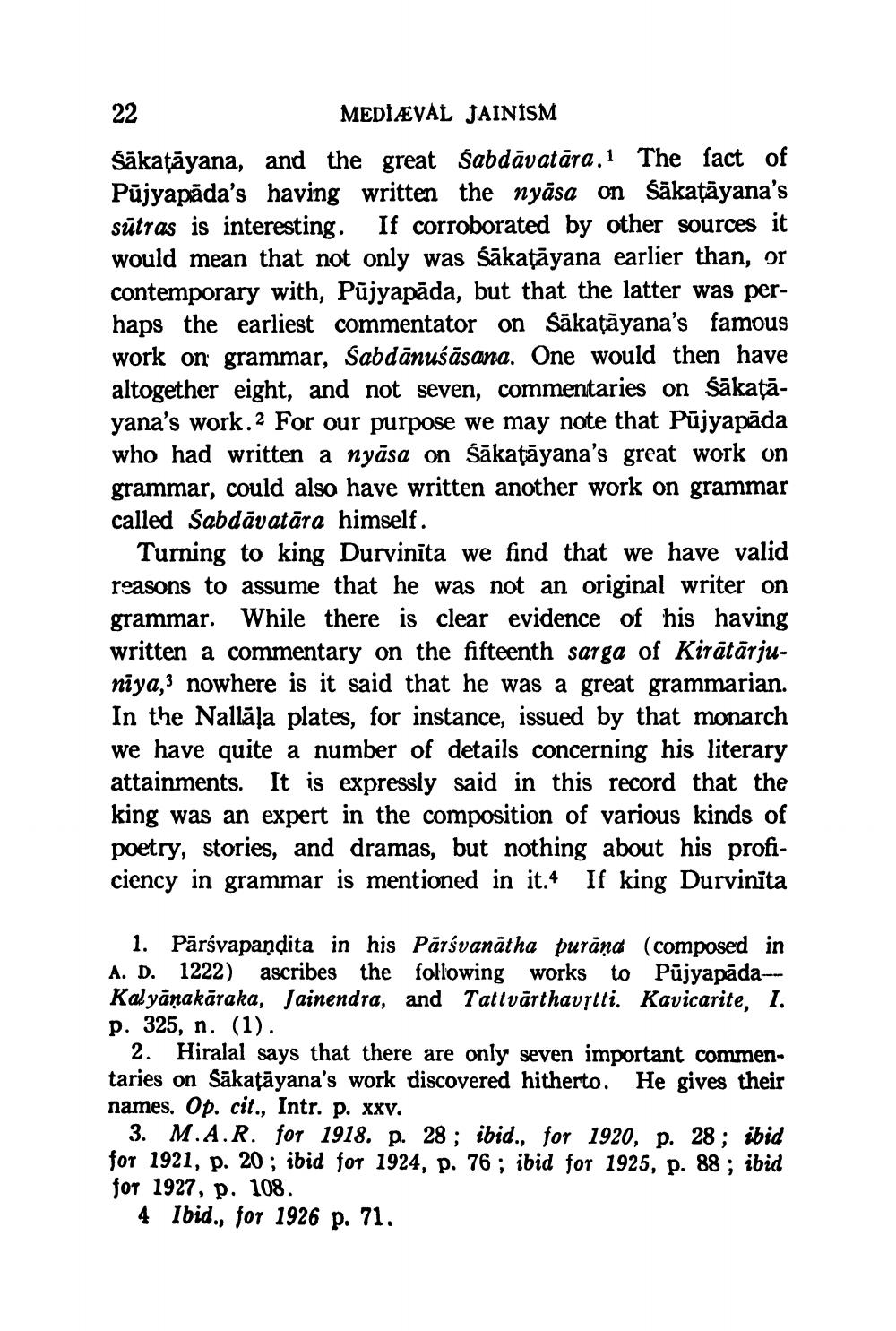________________
22
MEDIÆVAL JAINISM Sākatāyana, and the great sabdāvatāra.1 The fact of Pūjyapāda's having written the nyāsa on Säkatāyana's sūtras is interesting. If corroborated by other sources it would mean that not only was sākatāyana earlier than, or contemporary with, Pūjyapāda, but that the latter was perhaps the earliest commentator on Sākațāyana's famous work on grammar, Sabdānuśāsana. One would then have altogether eight, and not seven, commentaries on Sākatāyana's work.2 For our purpose we may note that Pujyapāda who had written a nyāsa on sākatāyana's great work on grammar, could also have written another work on grammar called Sabdāvatāra himself.
Turning to king Durvinīta we find that we have valid reasons to assume that he was not an original writer on grammar. While there is clear evidence of his having written a commentary on the fifteenth sarga of Kirātārjuniya,3 nowhere is it said that he was a great grammarian. In the Nallāļa plates, for instance, issued by that monarch we have quite a number of details concerning his literary attainments. It is expressly said in this record that the king was an expert in the composition of various kinds of poetry, stories, and dramas, but nothing about his proficiency in grammar is mentioned in it. If king Durvinita
1. Pārsvapandita in his Pārsvanātha purāņa (composed in A. D. 1222) ascribes the following works to Pūjyapāda-- Kalyanakāraka, Jainendra, and Tatlvārthavịtti. Kavicarite, 1. p. 325, n. (1).
2. Hiralal says that there are only seven important commentaries on Sākatāyana's work discovered hitherto. He gives their names. Op. cit., Intr. p. xxv.
3. M.A.R. for 1918. p. 28; ibid., for 1920, p. 28; ibid for 1921, p. 20; ibid for 1924, p. 76 ; ibid for 1925, p. 88 ; ibid for 1927, p. 108.
4 Ibid., for 1926 p. 71.




